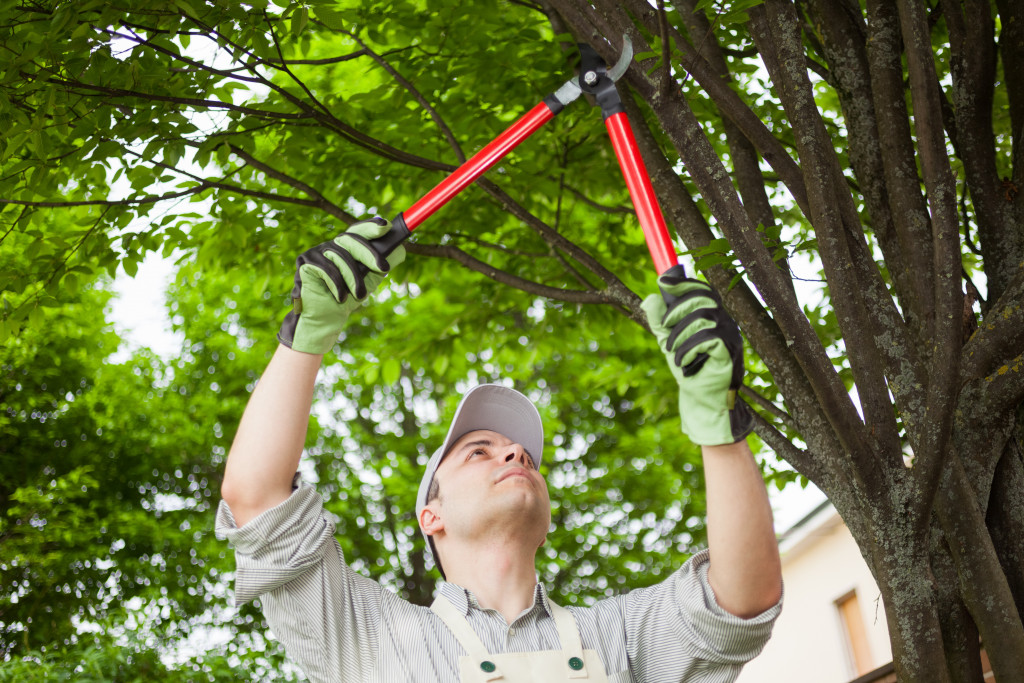Winter is a time of year when many people’s thoughts turn to their home landscapes. While you may spend the warm weather months enjoying the outdoors, the colder temperatures and shorter winter days make it more convenient to work on landscaping projects around the home. There are several things to keep in mind to ensure your home landscape looks its best during winter.
1. Keep your lawn mowed and raked.
This may seem like an obvious tip, but it’s essential to maintain your lawn through the winter months. You may not need to mow as often, but making sure the grass is cut, and the leaves are raked will help keep your lawn neat. Avoid walking on your lawn when wet, as this can damage the grass.
You should also avoid mowing too often, as this can damage the grass and make it more susceptible to disease. A good rule of thumb is to trim when the grass is about 1/3 of its average height. Depending on your grass, ask your local nursery or lawn care professional for advice.
2. Prune dead branches and limbs from trees and shrubs.
Dead branches and limbs can not only be unsightly, but they can also be dangerous. They can break off and fall, causing damage to property or injury to people. Regularly pruning trees and shrubs will help keep them healthy and looking their best. It would be best if you also pruned any dead branches from fruit trees to prevent disease.
If you are unsure how to prune correctly, many resources, such as books, websites, and even classes offered by local nurseries or extension programs, are available. You can also hire an expert tree service to ensure your trees are healthy and properly pruned.

3. Fertilize your lawn and garden.
The cold weather can take a toll on your lawn and garden, so giving them a little extra TLC during the winter is essential. Fertilizing your lawn and garden will help them to stay healthy and green. Read the instructions on the package carefully to ensure you are not adding too much.
Depending on the plants in your garden, you may also need to fertilize them during winter. Be sure to ask your local nursery or gardening expert for advice on what fertilizer to use and how often to apply it. You may also need to water your plants more often during the winter, as the colder temperatures can cause the soil to dry out more quickly.
4. Plant winter-hardy trees, shrubs, and flowers.
If you want to add color to your landscape during the winter months, consider planting winter-hardy trees, shrubs, and flowers. Many beautiful plants thrive in colder weather, such as holly, dogwood, and pansies. Adding these plants to your landscape will give it a splash of color when everything else is drab and gray.
Some people also like to plant evergreens like pine trees, as they stay green all year round. Evergreens can provide your landscape with year-round interest and can be a great addition to any home. Just be sure to plant them in an area with plenty of sun, as they need at least six hours of sunlight per day.
5. Protect your plants.
When the temperature drops, some plants will need a little extra protection. Be sure to mulch around the base of trees and shrubs to help insulate their roots from the cold. You can also cover tender plants with a layer of straw or leaves to help keep them warm. If you have potted plants, you may need to bring them indoors or put them in a greenhouse to protect them from the cold.
When protecting your plants, it’s better to be safe than sorry. If you’re unsure whether a plant needs to be protected, ask your local nursery or gardening expert for advice. Some plants are hardier than others and can withstand colder temperatures. However, it’s always better to err on the side of caution when it comes to plants.
6. Add lighting to your landscape.
Adding lighting to your landscape can help to create a warm and inviting atmosphere. Path lights are a great way to light up walkways and garden paths. You can also use string lights to decorate trees, shrubs, and other landscape areas. Especially during the shorter days of winter, lighting can help brighten your yard and make it more inviting.
Following these tips, you can keep your landscape looking its best all winter. Always check on your plants regularly and take action if they seem to be struggling. With a little care, you can keep your landscape healthy and beautiful all year round.